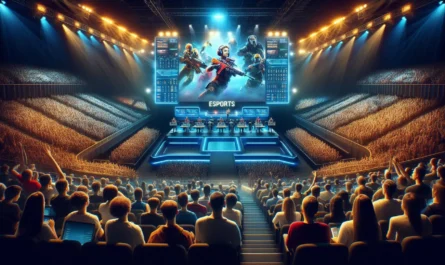In the modern era of sports, technology has become a game-changer, transforming how athletes train, recover, and compete. Integrating advanced tools and data-driven insights has elevated athletic performance to unprecedented levels. From wearable devices to AI-powered analytics, performance science has become a cornerstone of success in professional and amateur sports.
Wearable Technology: Real-Time Insights
Wearable devices have revolutionized how athletes monitor and optimize their training. Smartwatches, fitness trackers, and advanced sensors provide real-time data on heart rate, sleep patterns, calorie expenditure, and more. For elite athletes, these devices offer precise measurements of performance metrics such as stride length, jump height, and VO2 max (maximum oxygen uptake).
Companies like WHOOP and Garmin have created tools beyond tracking; they provide actionable insights. For example, athletes can adjust their training intensity based on recovery data or tweak their sleep habits to optimize performance. This personalized approach ensures that every training session is purposeful and aligned with the athlete’s physical condition.
Artificial Intelligence and Data Analytics
AI and big data are at the forefront of sports performance analysis. Using sophisticated algorithms, AI can process massive amounts of data collected from wearables, video footage, and training sessions. Coaches and athletes can identify patterns, predict outcomes, and customize strategies based on these insights.
In soccer, for instance, platforms like Catapult Sports use AI to analyze players’ movements, fatigue levels, and injury risks. In basketball, AI systems evaluate shooting angles and defensive formations, enabling players to refine their techniques. This data-driven approach enhances performance and reduces the risk of overtraining and injury.
Virtual Reality (VR) and Augmented Reality (AR)
VR and AR are transforming the way athletes prepare for competition. These technologies create immersive environments where athletes can simulate game scenarios, refine techniques, and build muscle memory without the physical strain of actual gameplay.
Quarterbacks in American football use VR to practice reading defensive alignments, while basketball players refine their free-throw routines in virtual arenas. AR, on the other hand, enhances real-world training by overlaying digital elements onto physical environments. For example, AR goggles can provide visual cues during a tennis serve or guide a runner’s pacing on a track.
Advanced Recovery Techniques
Recovery is as crucial as training, and technology is playing a pivotal role here too. Tools like cryotherapy chambers, infrared saunas, and pneumatic compression devices help athletes recover faster by reducing inflammation, improving circulation, and relieving muscle fatigue.
Sports science has also embraced regenerative therapies such as platelet-rich plasma (PRP) injections and stem cell treatments, which promote tissue repair and healing. Combined with real-time recovery data from wearables, these innovations enable athletes to return to peak performance sooner.
The Democratization of High-Performance Training
What was once exclusive to elite athletes is now accessible to everyday fitness enthusiasts. Apps like Strava and MyFitnessPal bring advanced analytics to recreational athletes, enabling them to train smarter. Online platforms offer AI-driven coaching, while home equipment like Peloton bikes and Tonal systems integrate advanced technology for personalized workouts.
The Future of Performance Science
The integration of technology into sports is only beginning. With advancements in AI, biometrics, and neurotechnology, the future holds limitless possibilities. Brain-computer interfaces, for example, could enhance focus and reaction times, while genetic profiling could tailor training to an athlete’s unique physiology.
Technology’s role in training underscores a simple truth: innovation is the ultimate ally in the pursuit of excellence. As tools become more sophisticated, athletes will continue to push the boundaries of human performance, unlocking new levels of achievement in the science of sport.




